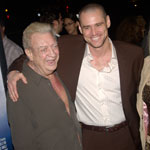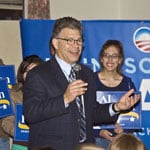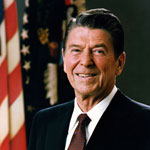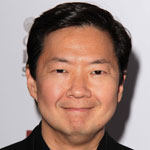Caddyshack Turns 40: Nine Things You Didn’t Know About the Cinderella Story
EPSN thinks it might be the funniest movie ever made about sports. Some point to it as another example of how Saturday Night Live incubates talents that are suitable for the big screen. And others consider it the best of the “slobs vs. snobs” subgenre of comedy. However you score it, Caddyshack has been one of most popular and most loved film comedies (almost) since its release 40 years ago this week. In honor of its longevity and continued hilarity, we’ll shoot a (front) nine full of things you didn’t know about Caddyshack.
1. It Was Created by Caddies
Caddyshack star Bill Murray is regular on the Celebrity Pro-Am circuit (Uploaded to YouTube by PGA Tour)
Writer and co-star Brian Doyle-Murray had the idea for the film based on his own experiences working as a caddie. His brothers John and Bill Murray had as well, as had their friend Harold Ramis. Brian, Bill, and Ramis had all been members of the Second City comedy troupe; Ramis also worked with Bill Murray on The National Lampoon Radio Hour and was one of four writers credited on Murray’s film, Meatballs. Douglas Kenney, who had founded National Lampoon magazine and co-wrote National Lampoon’s Animal House with Ramis and Chris Miller, came aboard and collaborated with Ramis and Doyle-Murray on the screenplay for Caddyshack. In 2002, the Murrays and their fourth brother, Joel, created and appeared in the Comedy Channel series The Sweet Spot, which featured the brothers playing golf at top-notch courses.
2. What Ramis Really Wanted to Do Was Direct
With his background writing for SCTV, National Lampoon, and two successful screenplays under his belt, Ramis was able to assume the director’s chair. Doyle-Murray took the role of caddie supervisor Lou Loomis, while Kenney would take a background role as one of Al Czervik’s (Rodney Dangerfield) hangers-on. The small scale of Kenney’s role was similar to his turn as Stork in Animal House, which he assigned himself and where he had only two lines; he’s the one who ultimately leads the marching band into a dead end. Brian and Bill’s brother John pulled double-duty on the film, appearing as a caddie extra and working behind the scenes as a production assistant.
3. Chevy Chase Was a Logical Fit
The “Be the Ball” Scene (Uploaded to YouTube by Movieclips)
Although Chase had passed on the role of Otter in Animal House (which was played by Tim Matheson), he agreed to join Caddyshack. Kenney was one of his closest friends, and he’d worked with Ramis and Bill Murray on The National Lampoon Radio Hour. An original member of the Saturday Night Live cast, Chase had also been the first to leave and find film success. By the time that he shot Caddyshack, he’d already had a hit with Foul Play. For his part, Murray was still on the show and would work shooting his scenes in the film around his SNL schedule. Doyle-Murray was also still working for SNL as a writer and would later be a full cast member.
4. There Are Too Many Palm Trees in Florida
Production began in the fall of 1979. Rolling Hills Country Club in Davie, Florida served as the location for the shoot; today it’s called Grande Oaks Golf Club. Ramis chose that location because it was one of the few Florida courses that didn’t have palm trees. The director was particular about that because he wanted the movie to feel like it could be in the Midwest. One downside of shooting in Florida was that the production had to contend with delays caused by Hurricane David, which briefly touched Florida on September 3.
5. The Film Made Rodney Dangerfield a Movie Star
Rodney Dangerfield was already established as a stand-up comedy star before Caddyshack. Dangerfield broke out after an appearance on The Ed Sullivan Show in 1967. He would regularly return to that show and became a popular guest on programs like The Dean Martin Show and The Tonight Show (where he was a guest 35 times). In 1969, he and Anthony Bevacqua created Dangerfield’s, a comedy club in New York, which became one of the home bases of HBO’s Young Comedian Specials. Dangerfield’s stand-up background and Chase and Murray’s grounding in sketch comedy made them all quick on the draw with improv, an environment that led to their roles getting expanded and improvised bits (like Murray’s flower-destroying fantasy monologue about playing at Augusta) making the final film. For his part, Dangerfield was launched into leading his own film comedies like Easy Money.
6. We Should Probably Get These Two Together
The “Mind If I Play Through?” Scene (Uploaded to YouTube by Movieclips)
The movie was already shooting when Ramis realized that two of the biggest draws in the film, Chase and Murray, had exactly zero scenes together. That may not have entirely been by accident, as Chase and Murray had famously had a contentious run-in backstage at SNL when Chase had returned to host the show. Nevertheless, Ramis, Chase, and Murray went to lunch together and worked out the scene where Ty Webb (Chase) plays a late-night round through groundskeeper Carl’s (Murray) place.
7. The Gopher Has Some Star Wars in Him
John Dykstra won an Academy Award for special effects work that he did for Star Wars, but he had already been famously pushed out of Industrial Light and Magic by George Lucas for budget and scheduling issues before that film was finished. Dykstra would go on to create special effects for a number of other high-profile projects, including the original pilot and theatrical film for Battlestar Galactica. Dykstra’s team created the gopher and his lair while also handling lightning and other visual effects in the film.
8. The Kenny Loggins Film Reign Begins Here
Kenny Loggins performing “I’m Alright” (Uploaded to YouTube by Kenny Loggins)
Kenny Loggins was already a music mainstay before Caddyshack. The Nitty Gritty Dirt Band did four of his songs in the 1970s, which is also when he formed his hit duo with Jim Messina. Loggins and Messina did seven albums in five years. He co-wrote the Doobie Brothers hit “What A Fool Believes” and wrote “I Believe in Love,” which Barbra Streisand sang in 1976’s A Star is Born. He contributed “I’m Alright” to the Caddyshack soundtrack, and it was used as the main theme of the film (and for the gopher’s memorable dance outro). He earned the nickname “The King of the Soundtrack” for his film work throughout the 1980s, which included hit songs for Footloose, Top Gun, Over the Top, and the less-said-the-better Caddyshack II: Back to the Shack.
9. The Hard Road to Classic Status
Harold Ramis on Caddyshack 30 Years Later (Uploaded to YouTube by American Film Institute)
The film was financially successful, but critics weren’t too kind. However, fans embraced it and it went on to an even bigger second life on cable and video. Critics reevaluated the movie over time as they realized how deeply funny and quotable it was. Bill Murray and Harold Ramis (on camera this time) reteamed the next year in Stripes, which was an even bigger success; Murray and Ramis did three more films together: Ghostbusters, Ghostbusters II, and Groundhog Day. Chase had major successes for the rest of the decade, including Fletch and three films in the National Lampoon’s Vacation franchise. Today, Caddyshack is regarded as a comedy classic and regularly places on lists of the American Film Institute, such as 100 Laughs and 100 Movie Quotes. The Murray brothers also own the Murray Bros. Caddyshack restaurants, two of which are still open in St. Augustine, Florida and Rosemont, Illinois.
Featured Image: Bill Murray attends Isle of Dogs New York special screening at Metropolitan museum on March 20. 2018. (lev radin / Shutterstock.com)
Famous Midlife Career Changers
Changing careers in your 30s, 40s, 50s, or even 60s can seem daunting or downright foolish to some. But for a Nobel Prize winner, a legendary female comic, and more, risky—and often multiple—midlife job swaps led to their success.

Toni Morrison
The Pulitzer Prize-winning author of Beloved and the first black woman to receive the Nobel Prize in Literature, Morrison started her professional career as an English professor in Texas, and then taught in Washington, D.C. In her 30s, she moved to New York to become an editor at Random House (first working on textbooks and then moving on to a senior editor position). She published her first novel, The Bluest Eye, at age 40.

John Grisham
Though he’s spent most of his adult life writing best-selling legal thrillers such as Sycamore Row and The Pelican Brief, Grisham spent the first part of his life as a lawyer and political figure. He published his first book, A Time To Kill, at 33, but the 5,000 copies printed received little-to-no recognition. His big break came four years later when he sold the film rights to his second novel The Firm to Paramount Pictures, before it was even published.

Rodney Dangerfield
Salesman Jacob Cohen had been moonlighting as a standup comic since his early 20s. He finally “got some respect” after his debut performance—under stage name Rodney Dangerfield (left)—on The Ed Sullivan Show at age 46. After long-awaited success, he began acting in his 50s and opened Dangerfield’s Comedy Club, whose stage welcomed little-known comics such as Jerry Seinfeld, Roseanne Barr, and Jim Carrey (right).

Kathryn Joosten
The two-time Emmy Award-winning actress decided to take acting classes at the Steppenwolf Theatre in Chicago in her 40s while she was working full-time as a psychiatric nurse. Joosten moved all the way to Buena Vista, Florida, for her first acting gig as a Walt Disney World performer.

Harland Sanders
Before he convinced the world that 11 is the prime number for a “finger lickin’ good” spice blend, the honorary Kentucky colonel was the ultimate career changer. Army mule-tender, railroad worker, and gas station operator were just a few jobs he held before buying a restaurant in his 40s. There he perfected his Kentucky Fried Chicken, but Sanders really got cooking at age 65 when he was put out of business and turned his recipe into a franchise.

Martha Stewart
Although the homemaking mogul has experienced some legal trouble, Martha Stewart’s career-changing power is inspiring: The former model turned stockbroker in her 20s, and then homemaker to caterer in her 30s. After her catering company was established, she wrote her first book (on entertaining) and began selling her first line of home-goods in her 40s. Nearing and into her 50s, the famous merchandiser became a TV show host, an editor-in-chief, and the billionaire CEO of Martha Stewart Living Omnimedia Inc.

George Foreman
The boxer-turned-minister made a heavyweight comeback winning the world championship at 45—after a 10-year hiatus. Following his win, Foreman was asked to endorse several products including the Lean Mean Grilling Machine (which he helped develop) and Meineke Car Care Centers. Since his midlife victory, Foreman has become an entrepreneur launching a line of cleaning products, shoes for diabetics, a restaurant franchise, and more, and he continues to preach at the church he founded in 1980.

Al Franken
After the former Saturday Night Live producer, writer, and cast member left the sketch comedy show, Al Franken went on to write three books of political satire that hit No. 1 on the New York Times Best Seller list. And he moved to radio, hosting a progressive talk show on Air America. In 2007, Franken (in his late 50s) chose to leave talk radio to pursue (and later win) a U.S. Senate seat. Franken is up for re-election this year.

Ronald Reagan
Another actor turned to politics, Ronald Reagan, is the oldest of our mid-life career changers, having been inaugurated at the age of 69. However, the 40th president of the United States took his first step from Hollywood limelight into the political spotlight in his early 50s when he became governor of California.

Ken Jeong
For comedic actor (and doctor) Ken Jeong, laughter won out over medicine. Jeong was a practicing physician performing medical checkups by day and standup routines by night in the early half of his life. He became a full-time actor in his late 30s when, oddly enough, he landed a role playing a doctor in the Judd Apatow film Knocked Up.

Phyllis Diller
Legendary comedian, actor, and author Phyllis Diller quit her day job at age 37 to pursue standup before she had even performed her first comedy routine on stage. Two years after she handed in her notice, Diller appeared on The Tonight Show and became America’s first female comedienne on tour.